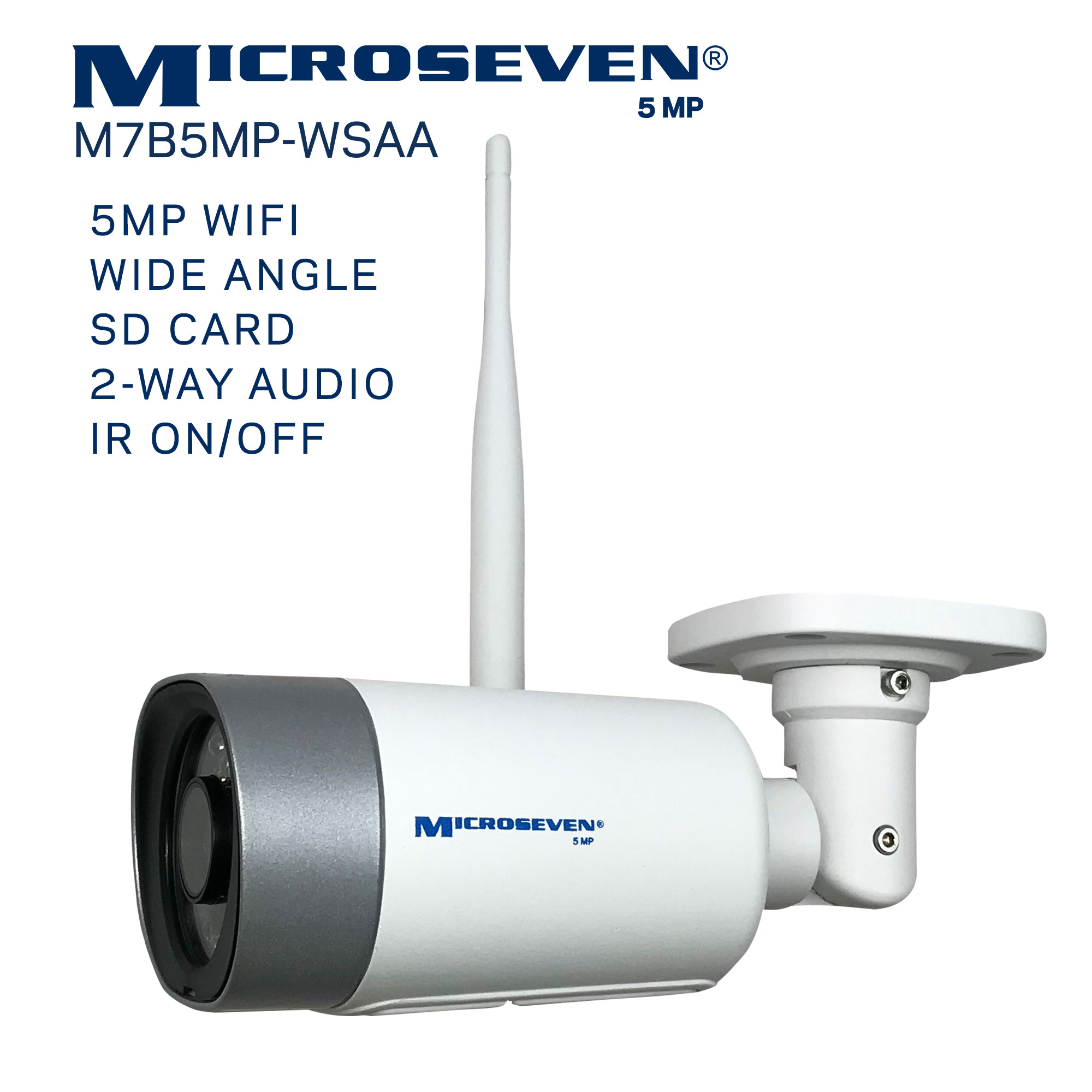
You can hear a very faint crackling on either setting when the camera starts recording but that's it. Tried the it on a Tascam 701D, with both line and microphone settings (I use that for podcasts), got nothing out of it either. Covered all the variables except one.I just happen to have ANOTHER Dericam S1 in the back yard so I tried it all on that one, too. Bought a separate Dericam 12v power supply, one for the camera, the other for the mic in case amps were too low.
#Microseven m7d77 default ip software#
The Dericam software allows you to select microphone or line inputs.this is powered, so I tried both (similar to phantom power, you can't hurt the mic if you connect the mic THEN power it up), got nothing either way. I tried disconnecting the power, switching inputs just in case, powered back on, still nothing. I installed it with the power "y" cable, got nothing. This is a no-brainer install, so that wasn't an issue. If you feel your audio is not up to par, look at the camera first as the likely limitation.

There is not a power "Y" cable connection to allow one to share the camera's DC power.Ĭonclusion: The microphone performs well on its own with bandwidth out to 20 Khz and very reasonable levels out to 12 kHz. THE BEST OF THREE MICS: I tried 3 different mics during my adventure to improve the IP camera's audio and while they were also reasonable performers, the MicroSeven had the best bandwidth over the audio range. Im don't know if there is an IP camera that will provide good bandwidth but I know the Sunba 405 IP camera does not. The microphone performance by itself, while by no means Hi-Fidelity is very functional and provides plenty of reasonable bandwidth to 12KHz and beyond out to 20 KHz to get good quality audio. The bandwidth through the camera provides an audio quality more like an old dial-up analog princess phone. The IP camera digitizes the analog audio from the mic and this particular Sunba camera uses a low sampling rate resulting in very poor fidelity when you listen to it through the IP camera.

See the attached plot showing the narrow camera bandwidth and the much larger microphone bandwidth. MISTAKENLY BLAMED THE MIC FOR POOR FIDELITY: I measured the audio bandwidth of the camera-external microphone system and after much testing using special audio analysis software and a special test microphone, came to the conclusion that the IP camera was causing the poor audio fidelity, NOT THE MICROPHONE! The Sunba IP camera cut off audio bandwidth at about 4KHz while the microphone bandwidth extends well past 12 Mhz. EASY TO HEAR NATURES SOUNDS: I could hear doves, birds chirping, hummingbirds squawking at other hummingbirds and owls at night The chirp is very quiet to the naked ear and the mic pics those up easily. For example, I have ultrasonic mole repellers stakes in the ground that give off a high-frequency chirp every 60 seconds.

SOUND SENSITIVE: The mic picked up quiet high-frequency sounds. NICE IT INCLUDED RCA ADAPTER: The kit came with an RCA male to male adapter barrel which was great as that was necessary to connect the mic to the Sunba camera. Also, the body of the microphone has a bracket with a hole to attach to a surface. EASY INSTALL: The Sunba 405 camera came audio-ready with an audio RCA connector and a power connector on a dongle to attach to the mic. The external microphones, all 3 of them were decent performers with the MicroSeven being the best of the three (Microseven, USA SALES and Tonto were there 3). After much testing, we discovered the Sunba IP camera was the issue, greatly limiting the audio bandwidth. We can select any camera and hear the audio through the TV. We use the mics is to listen to backyard sounds from the birds and other wildlife through several backyard cameras all managed through a Network Video Recorder and displayed on a TV. I installed and tested the Microseven microphone onto a Sunba 405 PTZ IP camera and along the way also tried 2 other microphones because I was unhappy with the quality of the audio and I thought the microphone was to blame.


 0 kommentar(er)
0 kommentar(er)
